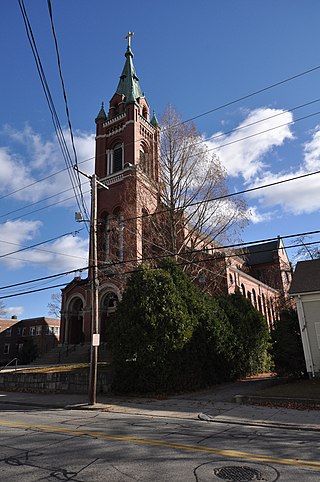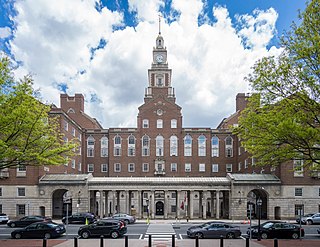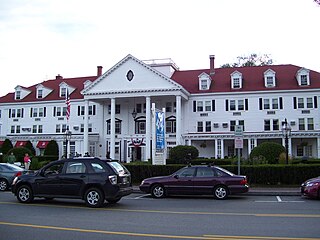
Henry Ward Ranger was an American artist. Born in western New York State, he was a prominent landscape and marine painter, an important Tonalist, and the leader of the Old Lyme Art Colony. Ranger became a National Academician (1906), and a member of the American Water Color Society. Among his paintings are, Top of the Hill, Corcoran Gallery of Art, Washington, D.C.; and East River Idyll, Carnegie Institute, Pittsburgh, Pennsylvania.

Harry S. Coombs (1878-1939) was an American architect practicing in Lewiston, Maine. He was the son of and successor to architect George M. Coombs.

Walter F. Fontaine was an American architect of French Heritage from Woonsocket, Rhode Island.

Alexander Blount Mahood was a Bluefield, West Virginia-based architect.

William R. Walker & Son was an American architectural firm in Providence, Rhode Island, active during the years 1881 to 1936. It included partners William Russell Walker (1830–1905), William Howard Walker (1856–1922) and later William Russell Walker II (1884–1936).
John F. O'Malley was an American architect from Rhode Island.
Morton Freeman Plant was an American financier.

Jackson, Robertson & Adams was an architectural firm out of Providence, Rhode Island. Established in 1912, it was originally made up of architects F. Ellis Jackson (1879–1950), Wayland T. Robertson (1873–1935), and J. Howard Adams (1876–1924).
Howard Hoppin was an American architect from Providence, Rhode Island.

C. Wellington Walker (1889–1967) was an American architect in practice in Bridgeport, Connecticut from 1910 until 1967.

S. Wesley Haynes (1892–1983) was an American architect from Massachusetts.

Frank Lyman Austin (1874-1942) was an American architect from Burlington, Vermont. He designed several buildings that have been placed on the National Register of Historic Places and others that are contributing buildings to listed historic districts.
Leonard Asheim (1877–1961) was a German-American Jewish architect from Connecticut. He was especially noted as an architect of schools.

Miller & Mayo, later Miller, Mayo & Beal, was a prominent architectural firm from Portland, Maine, established in Lewiston in 1907.

Frederick W. Keith (1879-1954) was an American architect, beginning his career in Indianola, Iowa but gaining prominence while practicing in Grand Forks, Bismarck, and Fargo, North Dakota. After a successful independent practice, he joined forces with William F. Kurke as Keith & Kurke.

Cudworth & Woodworth, later Cudworth, Woodworth & Thompson and Cudworth & Thompson, was an architectural firm from Norwich, Connecticut.

C. R. Makepeace & Company, established in 1889, was a nationally active firm of mill architects based in Providence, Rhode Island. It was dissolved in 1944.

Ernest C. S. Holmboe (1873–1954) was an American architect best known for his work in West Virginia.

Lyme Art Association (LAA) is a nonprofit art organization established in 1914, with roots going back to 1902. The LAA maintains a historic art gallery located at 90 Lyme Street in the Old Lyme Historic District, Old Lyme, Connecticut. The gallery was built in 1921 to a design prepared by the architect and artist Charles A. Platt. The association holds exhibitions throughout the year, featuring the work of member artists as well as visiting ones, with an emphasis on representational art The building has a north-light studio, where the association conducts classes year-round.

Dudley St. Clair Donnelly (1870-1937) was an American architect practicing in New London, Connecticut in the late nineteenth and early twentieth centuries.

















